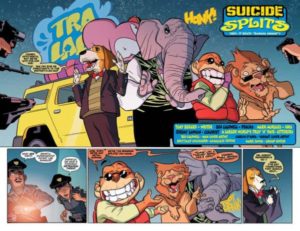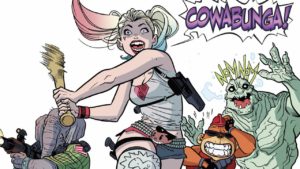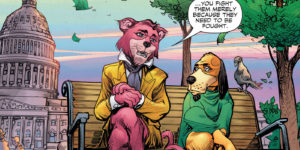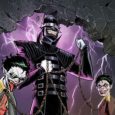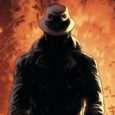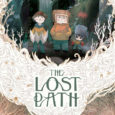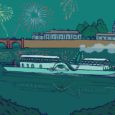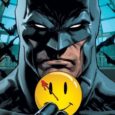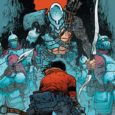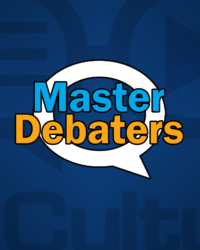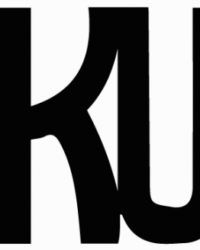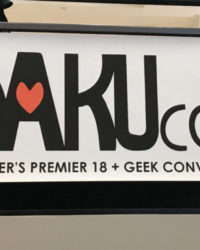Review | ‘Suicide Squad/Banana Splits Special’
Sub-Cultured
DC Comics
Writer: Tony Bedard
Pencils: Ben Caldwell
Inks: Mark Morales
Colors: Jeremy Lawson
Writer (Backup): Mark Russell
Artist (Backup): Howard Porter
Colors (Backup): Steve Buccellato
Mistaken for metahumans, thrown in the bowels of Belle Reve, the animal rock band Banana Splits are recruited by Amanda Waller for a secret mission: to save the Suicide Squad! What follows is the weirdest team-up you never thought you’d see! How can Fleegle, Bingo, Drooper and Snorky stand up to Harley, Deadshot, Katana and Croc?
And in the backup feature, Snagglepuss is a Southern gothic playwright working with an ensemble cast of cultural figures, exploring an intensely creative time in the New York City theater scene of the 1950s.
The return of a quartet of characters that have been out of the spotlight for nearly 50 years.
48 pages
March 29, 2017
$4.99
In the coming months, DC Comics will be releasing a slate of comic books featuring the reimagining of some of the most iconic cartoons characters ever, including Scooby Doo and Flintstones. As a preview to this, a few of this month’s Annual issues feature crossovers and backup stories of a selection of Hanna-Barbera’s other characters. One of these crossovers takes the Suicide Squad, a team of villains put to good use in a government wetworks program, and pairs them with the Banana Splits, a group of rock-n-rolling anthropomorphic animals from a show that aired in the late 1960s.
Full disclosure: I never watched the Banana Splits. It was way before my time. The only reason I even know about it is from the Liz Phair cover of “The Tra La La Song” on the Saturday Morning Cartoons Greatest Hits soundtrack. But that song is so ingrained in my psyche that when I saw the Banana Splits were featured alongside the Suicide Squad, I needed to pick the issue up.
The story opens with the Banana Splits getting chased by the police for a relatively minor traffic infraction. Through a misunderstanding, they’re arrested and sent to Belle Reve where they catch the eye of Amanda Waller, who just happens to be looking for a team of patsies to back up the Suicide Squad on a mission that has gone south. The two teams meet and, as expected, high jinks ensue as they join forces and take care of an unimportant plot point.
Written by Tony Bedard, the issue was not nearly as fun as I wanted it to be. Though most of DC’s readership likely has no idea who the Banana Splits even are, Bedard solves this problem by making a quick introduction of the characters by the second page, then immediately cracking a joke about how no one remembers them anyway. Unfortunately, that’s one of the few jokes that hits. Much of the issue is devoted to half-hearted humor and easy one-liners. The opening sequence is meant to be played for laughs, with the police mistaking Fleegle’s wallet for a weapon and immediately opening fire. Given how often stories like these flood the news waves, it’s actually surprising that this was meant to be funny but, well, here you go.
Even the tone of the book vacillates from page to page. Suicide Squad is, in general, full of mindless, action packed stories. Banana Splits, on the other hand, is mostly family friendly slapstick humor. Bedard manages to jam both of these tones into the story but they are often at odds with each other. The animals come off as gentle and easy going but two pages later are brawling in the middle of a prison riot. The sudden switch in characterization is jarring and the only way it works is just to shrug it off and go with it.
The art team, consisting of Ben Caldwell on pencils, Mark Morales on inks and Jeremy Lawson doing colors, manages to hold the story together though it’s not the most eye-catching display. The progression is easy to follow and Caldwell varies his angles to keep the pacing interesting, however, there is very little of note throughout the book. The colors are flat, panels and characters lack detail, and most everything is presented without subtext. Though I do have to say that I enjoyed many of the facial expressions Caldwell gives to the Banana Splits gang; not only did it seem difficult to give these animals humanistic expressions and make them feel natural, but they actually happened to be the funniest part of the book.
In addition to the main story, the book features an 8-page back-up starring Snagglepuss, another classic Hanna Barbera character that doesn’t have much of a millennial fanbase. This short was written by Mark Russell and imagines Snagglepuss in the center of the House Committee Un-American Activities during the 1950s. ‘Puss is a flamboyant playwright and he’s being questioned on what’s deemed his less-than-savory attitudes. Most of his dialogue is snarky and capitalizes on the literal interpretation of questions he’s asked, something that those who’ve seen a Snagglepuss cartoon would expect. But the story takes a swerve and settles into a social commentary on the importance of writers and how they’re perceived by society.
The art of the Snagglepuss story is just as clever as the writing. Howard Porter’s pencils are sharp and full of life, providing rich detail to his characters and environments. His panel layouts tend to get a little confusing, especially when he varies the angles to such a degree that it’s difficult to get a take on the scene, but given that almost half of the tale is set in a courtroom, this was likely intentional to keep things from getting boring.
Steve Buccellato’s colors are just as deep. Despite Snagglepuss being a large, pink cat, Buccellato approaches the character in such a way that his appearance in front of a bunch of business-suited men doesn’t come off as ludicrous. Luckily, Buccellato was smart enough to understand that the satire is evident in the concept of the story and bright, outlandish colors would have subverted it.
Overall, I do give credit to DC Comics for dusting off an old franchise like Banana Splits and introducing it to modern audiences. And while pairing them with the Suicide Squad was a bold move, it isn’t one that worked out too well. Instead of a one-off story in an annual issue, I would have prefer to see them in a mini-series of their own, to allow the writer room to expand on the characters and round them out a little more. At the very least, it may have been prudent to put the title into the hands of a different writer, one that’s less willing to turn a troubling social issue into a joke.
The Snagglepuss story is a prelude to a full series coming in the fall and is the most enjoyable part of this particular comic book.
Grade: C+
Grade (Backup story): A-
- The return of the Banana Splits Gang
- A few genuinely funny bits
- A gorilla dressed like Duke Nukem
- The Snagglepuss backup story
- Very little characterization
- Underwhelming art
- Crass humor


